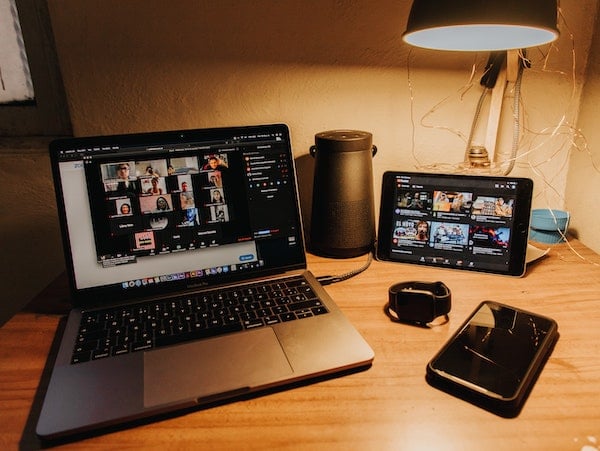Published on
Behind the Scenes of a Remote Learning Shift

Moving to a remote learning environment puts a lot of pressure of faculty and staff. Hundreds of hours have been put into preparing everyone to work remotely. This shift has significant impacts on the college and pushes IT into overdrive to ensure staff, faculty and learners are being adequately served. In this interview, Vi Bergquist pulls back the curtain to share some insight into how SCTCC made their operational shift to the remote working and learning environment, discusses the financial impact this outbreak has had on the college and reflects on how they’re preparing to retain students over time.
The EvoLLLution (Evo): How has SCTCC responded to the COVID-19 outbreak?
Vi Bergquist (VB): We took an all-hands-on-deck approach and swung into action because timing was so odd—everything was happening so fast. We’re a part of Minnesota’s State Colleges and Universities System, so we take our lead from the chancellor about how the system is supposed to move forward. The chancellor from the beginning emphasized the safety of our students, faculty and staff, so, the very first action taken was to extend Spring Break across Minnesota’s public postsecondary institutions. This kept students off campus where they’d be safe, and it provided us with an extra week to get people ready to work from home.
We hadn’t been a teleworking institution before. Our instructors had to get ready to take all classes online. Before that, we had 27% of our classes online. So it was a big leap for us to go from 27% to nearly 100% of classes online. Leadership meetings immediately had to use Zoom. We stopped all in-person meetings and started hosting virtual meetings. There were multiple meetings per day to work out our plans, and after we worked them out, we had daily communications going out to people. Our President, Annesa Cheek, designated one vice president to lead all coronavirus communication to ensure it remained in one voice and minimized duplicate or conflicting messages. Having everything go through one person really improved our communication.
Evo: From the IT perspective, what are some of the considerations you and your team are having to make to facilitate the shift to a remote working and learning environment?
VB: It took IT a week to get our stuff together so people could work remotely. The complexity of what we had to build and engineer in terms of is lost on most people. We had to create remote access systems so people could access everything they got from our school and from the Minnesota state network from home.
There were three different modes of remote access made for people. One mode we used was Duo, and they required a smart phone that they would use to access the platform at home—which some people don’t have. Whatever we did, we didn’t want to sacrifice our data security. Some of it is highly classified, so it needed to be secure and easy to access. It was a small miracle to pull that off in a week. We were just building on the fly, working together as a team. By the end of the first week we had most of our people working remotely.
Right now, we only have 28 staffers left on campus. This place has really emptied out, following the chancellor and the president’s directives. We want people to be as safe as they can be, and we don’t want to contribute to community spread. I’m still on campus, having been designated an essential staff member along with four of my IT team members since the chancellor ordered that we maintain student services. That means keeping our computer lab open because we’re offering the students who don’t have access to computers nor the funds to buy them to take their online classes on campus.
Evo: How have the students enrolled in technical and workforce education programs been affected by the change?
VB: That’s been one of the trickier issues to address. We have a handful of classes in the technical and health areas that were suspended because the instructors felt there wasn’t another way for these students to get the education, for example, welding. It’s not ideal or optimal, but the instructors can’t see another way to do it right now. That may change for summer session when they find a way to take the classes online, it’s still an unknown for us.
Evo: How does this financially affect the institution?
VB: We’ve set aside funds that are just dedicated to this. We have a cost center for COVID-19 to track expenses and, in truth, it’s been expensive so far. We had to buy software we didn’t need before, and granting access remotely is expensive. We’ve been spending money on all kinds of extra things like disinfectant wipes and sprays but also incurring a lot of technology-related expenses.
We are also tracking hours because people like my IT staffers have been spending every minute of their work time on this particular crisis. We’re tracking it on our time sheets so we can report that back to administrators and show them the number of hours we had to spend preparing for this. It’s been expensive, but at the end of the day, it’s all about making sure learners are being served and cared for.
Evo: How are your staff adapting to this significant shift?
VB: We’ve been having Zoom meetings every day, and I told them that I have never been prouder of them as a supervisor. The way they have responded with kindness, compassion, patience, getting some people who may be low skilled in technology up and running remotely. They’ve offered to work over the weekend and keep open hours, conduct Zoom meetings over the weekend or drop-in meetings for people to come and ask questions they were nervous or scared to ask or just get help moving online.
There hasn’t been any grumbling. There’s this sense of our community pulling together, and we want our college to get through this successfully. They seem to be adapting to working remotely, but our help desk calls have probably increased fivefold, which was expected. They’ve been tapering off now, and it’s a good time because when classes start Monday, the student calls are going to increase. We’re all concerned for students who hadn’t intended to take classes online and want them to be successful because we know not everyone’s well suited to taking classes online.
Staff have dedicated themselves to helping students succeed online and navigate the learning management system. The change has been challenging for some faculty who had in-person classes. To move classes online in less than three weeks is a big ask and commitment. But nobody’s complaining. They’re doing it with learning tools we’ve had available for some time. They’re just diving in and using them. That’s very encouraging. We have daily drop-in sessions where you can come in and ask your questions or pick up tech tips. We’re also having a lot of people using these drop-in sessions to thank us, and that’s so good for the IT staff to hear. It’s a lot of commitment but we’re doing it for the students. Everybody’s in it for the right reason; we know why we’re here.
Evo: How much of this do you think is going to last once we “get back to normal again”?
VB: A surprising amount of it is going to last. When we were building our infrastructure, we built it with the future in mind because we should be prepared to operate like this. Things are really changing and now it’s been proven to be possible and successful, why wouldn’t we keep doing that?
For students, we already had a pretty good online infrastructure. There were quite a few online classes, so we built systems for students to do everything online—without needing to come on campus–and they do take full advantage of it. That was one area where we were ahead of the game.
Evo: What’s needed to scale to meet the demand that’ll be placed on colleges in the next three to five years?
VB: Enrollment is going to be particularly important. In the near term, we’ll have drops in enrollment for sure. But going forward, it depends on how long this pandemic will last. Certainly in three to five years we’re going to have a lot of demands placed on our institution to do more and be more—and be able to enroll more people. We really need to start looking at doing more online. There isn’t a reason to build a larger physical footprint for things that can easily be taught online.
Getting these online pieces in place and getting good at doing it, making sure they’re really high-quality classes—that’ll be the answer to scaling for us. There’s a really big demand for trades. That’s an area that it is difficult to do virtually but there are ways. We’re also looking at adding more night and weekend classes.
I see us enlarging our schedule to accommodate more non-traditional learners. There’s a shortage in plumbing, electrical and construction. So we’re ramping that up, and will launch our plan to add more students in those areas. The word is finally getting out that there are good paying jobs in the trades which is encouraging for students.
Evo: What are a few lessons about disaster preparedness that you’ve taken from this experience so far?
VB: One of the best things we did was getting information out quickly and frequently. We really tried to make sure it was also accurate. Our core team got together quickly too to define and share key messages.
From the IT perspective, we quickly had to discuss strategy because it was clear that we were going to have to get people off campus and get classes online. But as I said before, we did not want to sacrifice security. So, we had to be fast but also efficient.
You also can’t over-communicate. Every time we knew something, we didn’t wait to let people know. Teleworking is also going to see a change. That’s going to increase now that we’ve shown that we can do it successfully, and going forward, this little nasty virus will have changed that part of our work for the better.
This interview was edited for length and clarity.
Editor’s note: This interview was recorded on March 24, 2020.
Author Perspective: Administrator



